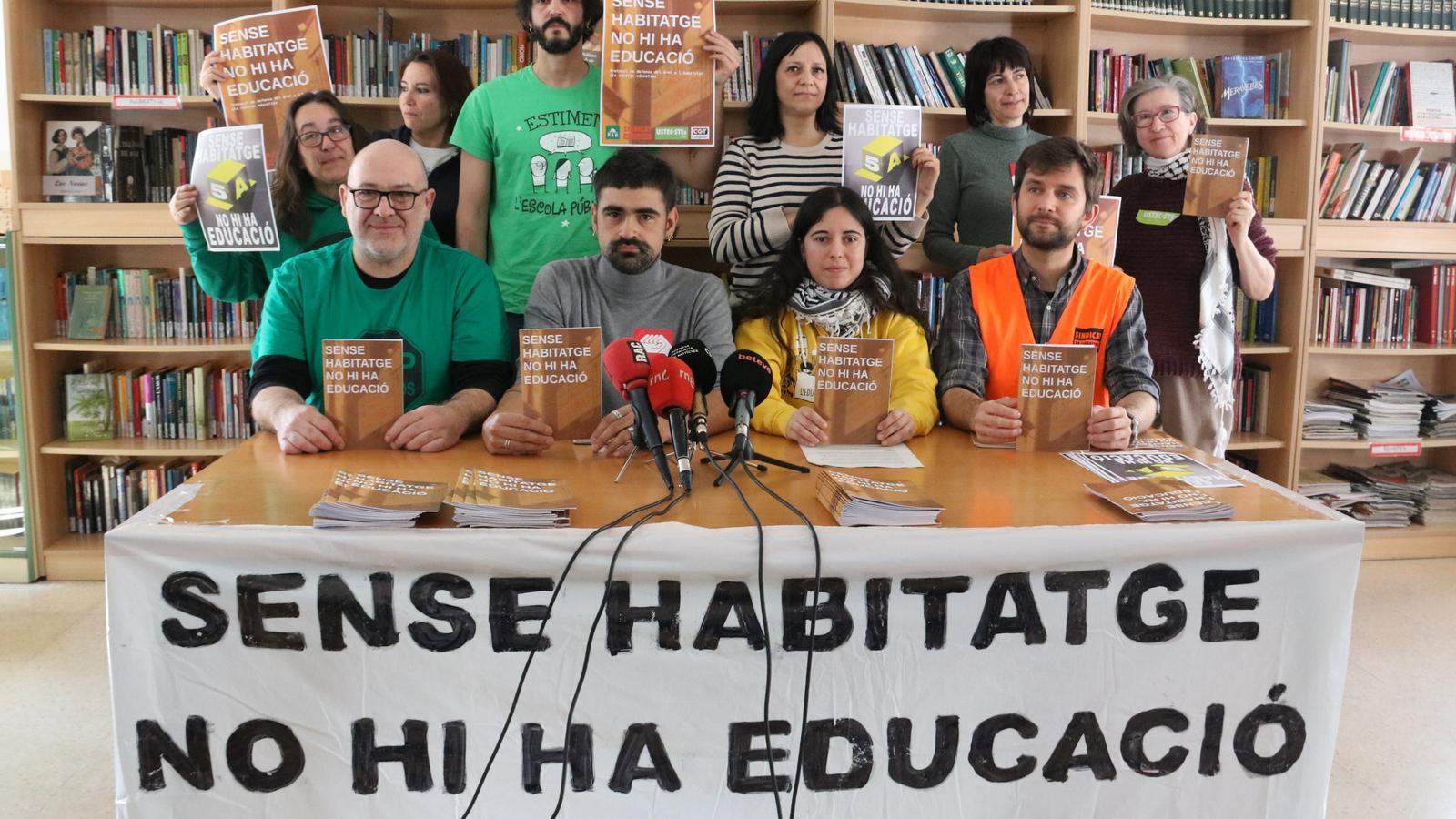What should a teacher do when he or she knows a student is about to be dropped?
Education unions and housing rights organizations create a protocol for dealing with emergencies in schools.

BarcelonaChildren are affected in 70% of evictions in Barcelona. This terrifying statistic means that the housing crisis will eventually force its way into schools and impact them. That's why the unions Ustec and the CGT, together with the Renters' Union and the PAH, have created a protocol for school teachers to assist in housing emergency situations affecting students. "The violation of the right to housing has consequences in all areas, including education," emphasizes PAH spokesperson Enric Aragonès.
The protocol is summarized in four parts, the first of which consists of identifying who can assist a minor affected by the housing crisis: people such as the guardian, or the Association of Families of Students (AFA). The second step, according to the protocol, is to provide a list of responses to different types of violence, such as what to do in the event of imminent eviction or an increase in rent, among other situations.
In the classroom, the document states, professionals can identify that a student is at risk through a direct explanation from the child themselves or deduce it from vulnerability indicators such as changes in behavior, poor hygiene, or not having breakfast during recess. When this situation is detected, the school must organize a tutorial to analyze the case. Once the circumstances have been assessed, the school can refer the case through institutional channels (which is what has been done so far) and through collective channels, which involve the closest housing rights advocacy organizations.
The organizations' protocol aims to provide advisory tools to teachers so that the school can provide ongoing support for the situation experienced by the student and their family. Information is provided, such as that in the most urgent cases, such as imminent evictions, free legal assistance can be requested. Furthermore, it is reminded that all families, whether at risk or not, can access open resources such as a map of housing groups, a guide to housing law, a rental guide, and a directory of organizations working for the right to housing.
The struggle, inside and outside the classroom
Beyond this protocol, some schools have chosen to bring this housing issue into the classroom. The goal is to normalize the situation experienced by many students and families and eliminate the feelings of guilt and shame felt by many of the affected children. USTEC member Cristina Martín argues that teaching "goes beyond the transmission of knowledge" and is based precisely on wanting to support students.
Poverty and urban segregation in many municipalities are factors that also impact the quality of the education system, according to the unions. They emphasized that combating the commercialization of housing must take place both inside and outside the classroom, and noted that demonstrations are planned for April 5th to demand a halving of rents. In Barcelona, the mobilization is scheduled for Plaça d'Espanya at 6:00 p.m.
